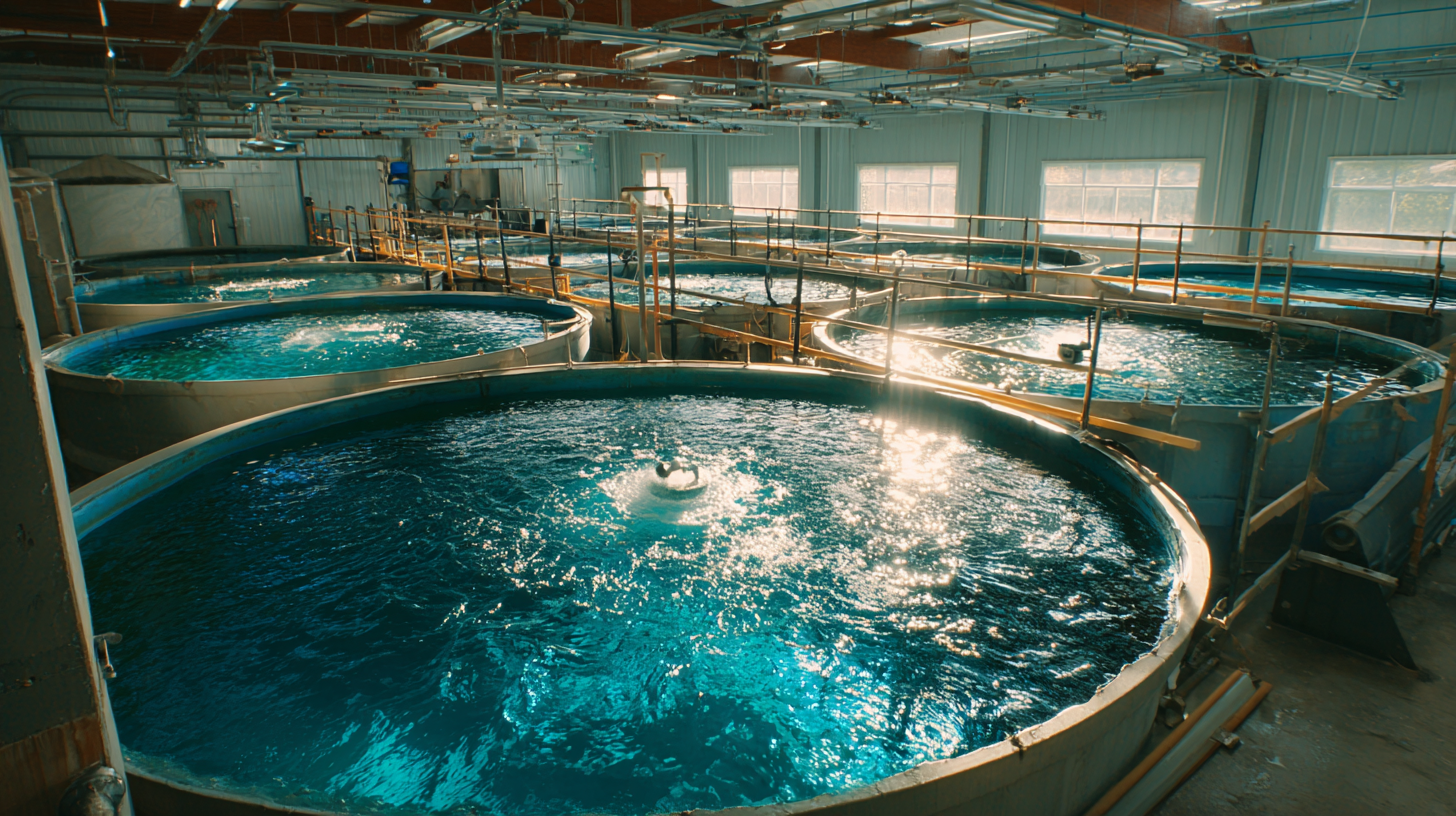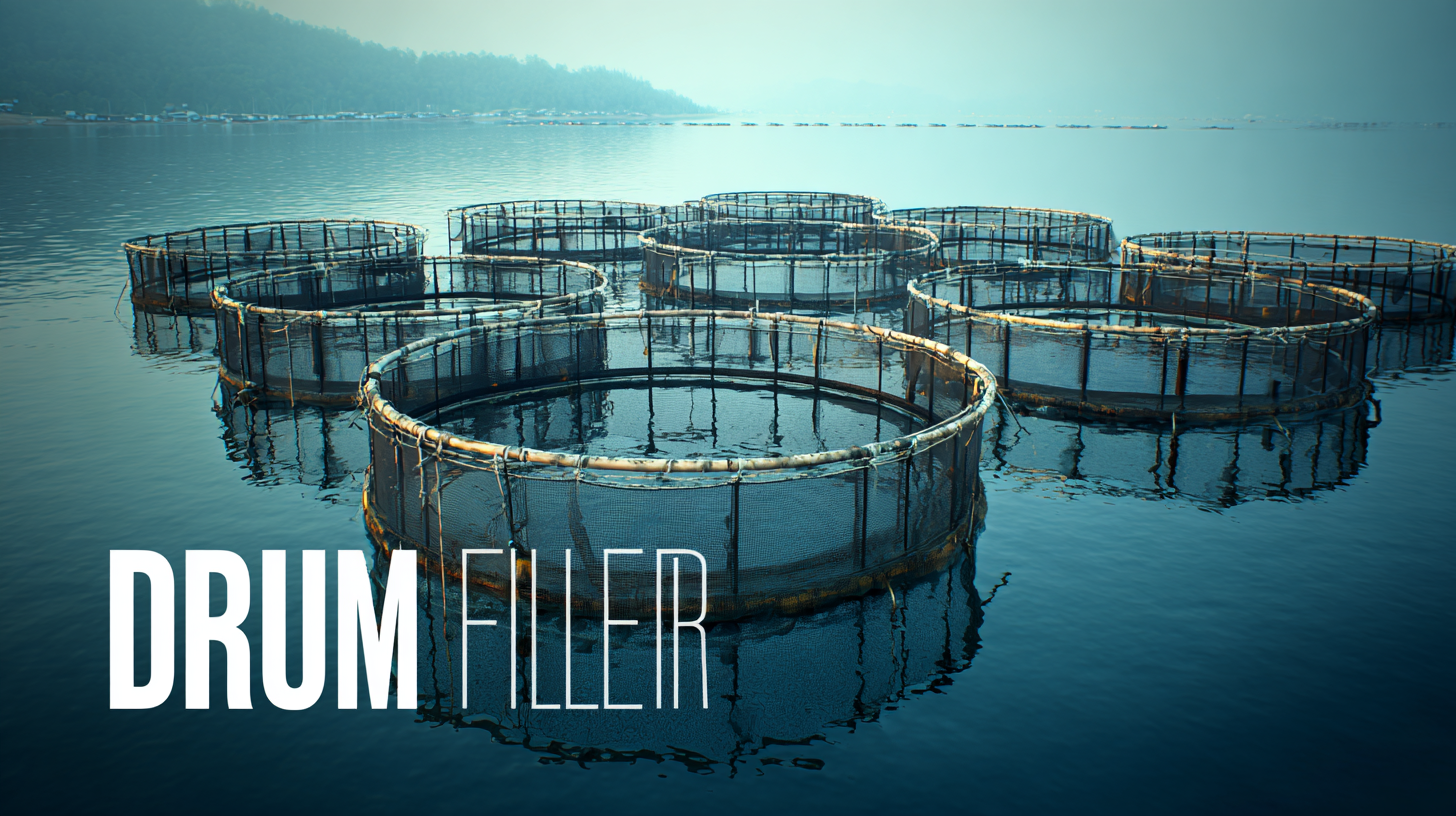 +86 13600513715
+86 13600513715



As aquaculture continues to expand globally, the demand for efficient and effective filtration systems becomes increasingly critical. Among the various options available, the Drum Filter Aquaculture has emerged as a popular choice for maintaining water quality and clarity in fish farming operations. According to a report from the Food and Agriculture Organization (FAO), aquaculture production reached over 114 million metric tons in 2020, underscoring the necessity for advanced water treatment solutions to support this growth sustainably. The Drum Filter, characterized by its automatic backwashing capability and high filtration efficiency, offers significant advantages over traditional alternatives, such as sand filters or bead filters. By enabling continuous filtration and reducing labor costs, the Drum Filter Aquaculture not only enhances operational efficiency but also aligns with the industry’s increasing focus on environmental sustainability. Thus, understanding the technical specifications of these filters is essential for aquaculture operators seeking optimal performance in their operations.

When selecting a drum filter for aquaculture, there are several critical features to consider that can significantly enhance water quality and overall system efficiency. One of the primary aspects is the filter's mesh size. A finer mesh can effectively catch smaller particles, thus ensuring cleaner water, while a coarser mesh may allow for quicker water flow, making it easier for larger debris to be processed. Finding the right balance between filtration efficiency and flow rate is essential based on the specific needs of the aquaculture system.

Another vital feature is the automatic backwashing mechanism. This innovation allows for continuous filtration without manual intervention, which not only saves time but also optimizes the filter's performance. Automatic systems can reduce downtime and ensure consistent water clarity, crucial for the health of aquatic life. Additionally, look for filters made from durable materials that can withstand harsh environments and regular cleaning processes. These technical specifications ensure longevity and reliability, making them a worthy investment for any aquaculture operation.
When it comes to selecting the best drum filter for aquaculture, understanding the different types available is crucial for optimizing your system's efficiency. Drum filters generally fall into a few main categories:
mechanical, automatic, and semi-automatic.
Mechanical drum filters are the most traditional and require manual cleaning, making them suitable for small-scale operations. However, their labor-intensive nature might not be ideal for larger aquaculture systems.
On the other hand, automatic drum filters are designed for larger setups, utilizing a self-cleaning mechanism that increases their efficiency and reduces maintenance time. These filters can handle higher flow rates and are equipped with automated controls to ensure consistent performance. Semi-automatic options bridge the gap between mechanical and fully automatic systems, offering a compromise in terms of ease of use and maintenance needs. Choosing the right type for your aquaculture system ultimately depends on your specific operational requirements, budget, and the scale of your setup.
Flow rates play a crucial role in determining the performance of drum filters in aquaculture systems. The efficiency of a drum filter is directly related to the volume of water passing through it, influencing both the filtration effectiveness and the health of aquatic life. When selecting a drum filter, it's essential to consider the intended flow rate for your specific aquaculture setup. A filter that cannot accommodate the required flow may lead to inadequate filtration, resulting in poor water quality and potential stress on fish and other aquatic organisms.
Moreover, the relationship between flow rates and filtration media is significant. High flow rates can lead to insufficient contact time between the water and the filter media, reducing the filter's ability to capture waste and debris effectively. Conversely, if the flow rate is too low, biofouling may occur, causing blockages and diminishing the filter's efficiency over time. Understanding these dynamics allows aquaculture operators to optimize filter selection and adjust practices for better water management. Prioritizing appropriate flow rates ensures that drum filters perform at their best, providing a conducive environment for healthy aquatic ecosystems.
Maintaining the efficiency of a drum filter is crucial for optimizing water quality in aquaculture systems. Regular maintenance can enhance the filter's performance, prolong its lifespan, and ultimately contribute to healthier aquatic environments. According to a report by the Aquaculture Technology Society, well-maintained drum filters can reduce solid waste by up to 95%, significantly lowering the impact of waste on aquatic life.
To ensure optimal performance, operators should perform routine inspections of the filter drum and screen mesh for any signs of wear or clogging. The recommended practice is to clean the filter screen every 1-3 days, depending on the load and type of feed used. Additionally, monitoring the hydraulic pressure across the filter can indicate when cleaning is necessary. Studies have shown that maintaining a consistent hydraulic flow rate not only increases filtration efficiency but also decreases the energy consumption of the system, which can lead to operational cost savings of up to 20% over time.
Furthermore, the use of specialized filter media designed for high flow rates can enhance the efficiency of the drum filter. Research has demonstrated that choosing the right media can reduce maintenance frequency while improving filtration results. Regular calibration of the filter's automatic cleaning mechanisms is also essential to maintain a consistent performance level, ensuring that the aquaculture system operates smoothly and reliably.

When comparing drum filters to traditional filtration methods in aquaculture, it’s essential to recognize the unique advantages that drum filters bring to the table. Unlike conventional filters, which often rely on passive means of debris removal, drum filters utilize a rotating drum that actively separates solids from water, leading to a more efficient and effective filtration process. This innovation minimizes the chances of clogging and reduces maintenance requirements, making drum filters a preferred choice for many aquaculture operations.
Tip: Regularly monitoring the drum filter’s performance can help ensure optimal water quality. Keep an eye on the flow rate and maintain consistent cleaning schedules to maximize efficiency.
Moreover, traditional filtration techniques may struggle with larger volumes of water, often resulting in inconsistent output. Drum filters, with their ability to handle significant volumes while maintaining the clarity of the water, stand out as superior in aquaculture settings. Their automated systems mean that operators can spend less time on manual cleaning and more focus on their aquatic species’ health.
Tip: Leveraging automated features can significantly streamline management processes. Consider investing in smart monitoring systems to receive real-time updates on filter performance and water quality.
